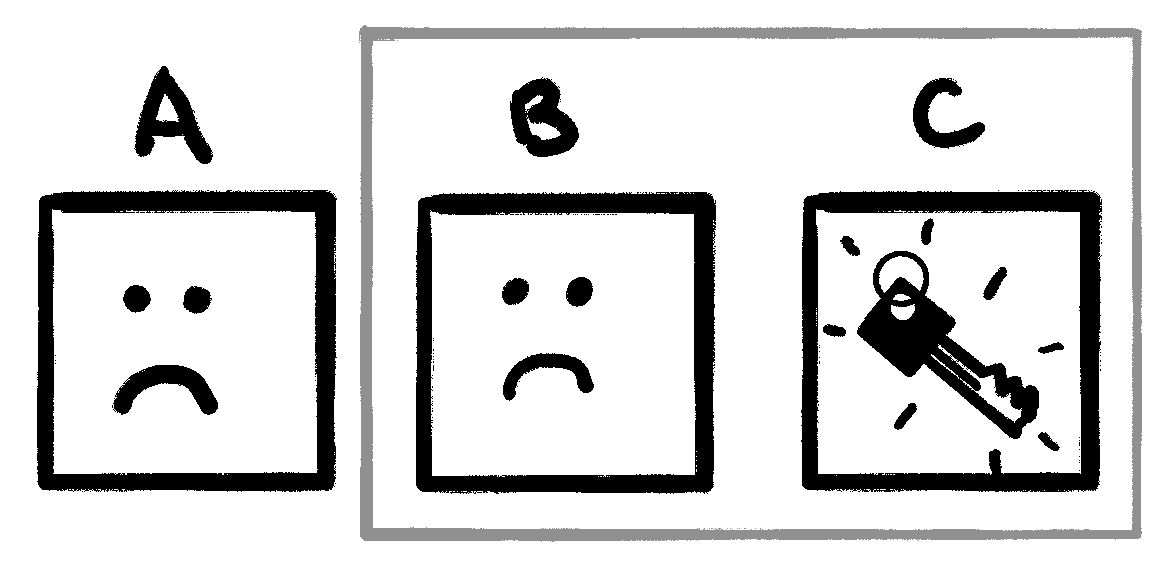Hopefully you’ve heard about the Monty Hall problem. If you haven’t, here’s a recap. Center yourself, suspend your disbelief, prepare to step into a role.
It’s the ’70s, and you’re a contestant on a game show in LA called “Let’s Make a Deal.” You’re dressed like the love child of the Tin Man and a cinder block (or a farmer, or a flower, or a cowboy) for some reason and Monty Hall, the host, saunters over with a proposition. “One of these three boxes has the keys to a brand-new 1975 Lincoln Continental,” he says, “and the other two are empty. If you pick the box with the keys, you get the car.” You close your eyes and pick Box B. Monty hands it to you, saying that he’s “going to open Box A, and… it’s empty. No keys in Box A, but they could be in Box C! Now, here’s the catch: you can choose whether you want to open Box B or Box C. I’ll give you $1000 to open Box B right now, no matter what’s inside. If you open Box C, you don’t get a cent.”
Do you take Monty’s deal, or do you switch?
Your gut probably says your choice doesn’t matter. Since Monty showed you somewhere the keys aren’t, either Box B or Box C has to have them; the experiment “resets,” giving you only two choices, so your odds of picking right are 50/50. Monty even tells you that the chance you’re holding the keys is \(\nicefrac 12\). You really want this car (which gets a tree-hugging 10 miles per gallon) so you steel yourself, open Box C, and CONGRATULATIONS YOU’VE WON!
If you repeat this exact scenario — Boxes A and B are empty, Box C has the keys, and both you and Monty make the same choices — you’ll find the keys half the time. But what if you’d picked Box A or C to start with?

Here’s where I think most explanations go off the rails: they run through all the possible scenarios, talk about prior and posterior distributions, talk about the point of statistics, get worked up about details that don’t matter, substitute doors for boxes, add way more doors (which is an interesting angle of attack, but not the point), things like that. I think there’s a simpler explainer, and we can find it by reviewing the rules of the game. In this experiment,
- You pick a Box at uniform random.
- Monty opens a Box not containing the keys.
- You are allowed to stay (keep the Box you chose originally) or switch (choose the Box that neither you nor Monty opened).
To make this easy, your strategy is to always switch — no matter what, you choose the unopened Box at Step 3. Step 2 says that Monty can’t open a Box with the keys inside, so all the variability comes from Step 1: your initial choice. Just by following the rules, we know two things:
- If your initial choice contains the keys, the unopened Box is always empty. Switching loses.
- If your initial choice doesn’t contain the keys, they’re always in the unopened Box. Switching wins.
Because your initial choice is uniform, your Box has the keys \((\nicefrac 13)\)rd of the time, and doesn’t in the remaining \((\nicefrac 23)\)rds. Two out of every three times, switching wins. That’s it! All bases covered, no discussion of opaque stats, no enumeration, just a plain reading of the rules.


